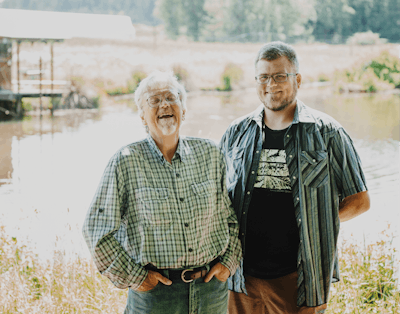
The close bond between Glen and Dan James, the father-son duo behind Bosmere Farms, is obvious when you catch them discussing their business. For instance, when Dan, the farm’s director of operations, answers a question, Glen, the CFO, chimes in with additional details and prompts Dan to extol on his clever business plans, as any proud father would do for (and to) his son. And Dan, like any normal son, becomes sheepish by his dad’s interventions. The pauses before his answers ooze with playful eye-rolling toward his father.
Glen is right to be proud of his son. Thanks to Dan’s careful planning, Bosmere Farms, an outdoor cannabis cultivation business catering to Oregon’s adult-use market, has managed to do what many thought impossible: They reduced spending to where the company can budget production costs for a pound of cannabis at a mere $32 (depending on the year’s total yield). This cost-per-pound makes the family-owned and -operated business sustainable even when dried cannabis pounds wholesale for $100, as is currently the case in Oregon.
The key, according to the James family, is cutting costs (including their costs of living) to the bare minimum and focusing their production on the extract market—exclusively. In short, they are “bootstrapping” it.
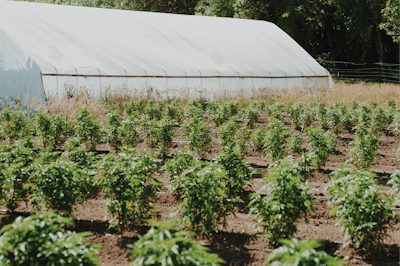
“This is how you bootstrap, every step of the way,” Glen explains. “Take the issue, understand it, break it down, research the possibilities, talk to suppliers and work out the practical solution with what you have as resources.”
In true bootstrapping fashion, the family sold their homes and life insurance policies, cashed in 401(k)s and banded together to create their business. By the end of the financing spree, the only assets Glen and his wife (Dan’s mother) had to their names were two cars. Everything else went toward purchasing and developing the farm. When not working on the farm, family members spend free time working full- or part-time jobs to help make ends meet. “I like to think that we’re better off wanting what we have than having what we want,” Glen says. He lives with his wife in a fifth-wheel trailer, while Dan, his wife Emily, and their son live in the house—all on the new farm.
Part of how the team keep its costs low is by working exclusively with Cura Cannabis Solutions, the extraction company that produces the top-selling extract brand Select Oil. They have no expenses related to the product’s sale: Cura buys the farm’s entire harvest at once and even handles the pickup.
Cura and Bosmere Farms have created a healthy working relationship over the past three years, says Griff Jones, Cura’s vice president of supply chain.
“They have an amazing team, they communicate openly and efficiently, and they’re all passionately dedicated to growing the cleanest, most high-quality product in the state,” Jones says. “Working with a family who is so close-knit is a really special opportunity, and it’s fun to see how Daniel and Glen communicate both as father and son and as business partners.”
Open communication is essential to Bosmere Farms, both internally and with Cura, Glen says. Alerting Cura of any issues or delays builds trust between the companies, he explains, and allows Cura to be more flexible with the cultivation company when problems arise. This open line of communication was especially useful in the farm’s first two years of operation, when the Jameses discovered just how big an impact inclement weather has on outdoor cultivation.
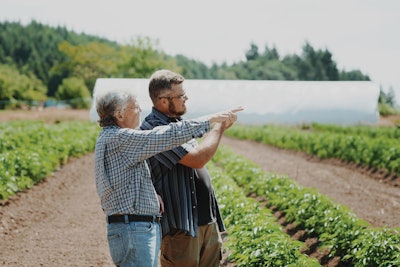
Year 1: Rainy With a Chance of Mold
Early in the business planning stages, Dan and his father disagreed on how Bosmere Farms should operate: Glen thought his son’s cannabis was top-shelf and should be marketed as such. Dan knew otherwise.
Not only did the younger James believe he would never be able to match the “bag appeal” (the physical appearance of the buds) of indoor or greenhouse cultivators by farming outdoors, he understood that the branded-flower route came with extra overhead costs.
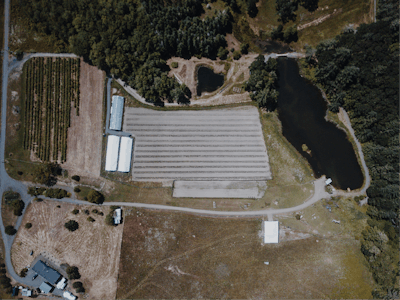
Branding and marketing are expensive, and thanks to Section 280E of the Internal Revenue Code (which forbids cannabis businesses from deducting anything from their taxes except the cost of goods sold (COGS)), marketing expenses are non-deductible from tax filings for cannabis companies. Instead of fighting the whole Oregon market for shelf space, Dan decided to treat his cannabis as a commodity crop.
“The way I see it is I grow the hops for Cura to make craft beer,” he says.
“The companies who have those [marketing] costs, unless they’re fudging it and running those costs as supplies or maintenance or one of these buckets that you can throw these into, their actual tax rate is much higher than any other business,” Glen adds.
With a plan in hand, Dan took the first step into Bosmere Farms’ bootstrapping journey and began on the farm’s application. With no money for legal advice or consulting services, and little guidance from the Oregon Liquor and Cannabis Commission (OLCC), Dan spent October through December 2015 completing the application as best he could.
It was a race against the clock to plant the first crop once Bosmere Farms received its cultivation license, Dan explains. “It was a rough transition because we pretty much had no time and had a lot of expenditures for that year.” Apart from licensing fees, Dan’s significant investments included more than $12,000 in compost for his fields.
However, he did find ways to cut costs. For example, Dan purchased 27 security cameras to install across Bosmere Farms’ property, but saved more than $20,000 by installing the system himself. By hand, he ran more than 3 miles of security camera cable across the farm. Friendly neighbors loaned Dan their tractors so that he could finish prepping the fields more quickly.
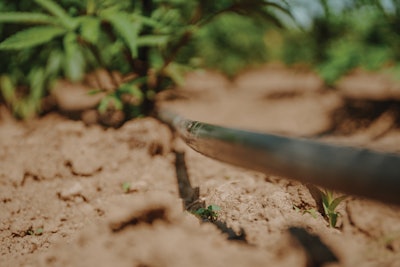
Dan also saved money by using structures already on the property instead of investing in new construction. The property came with a fully wired and powered semi-trailer that the previous owner had converted into a metal shop. Dan converted it into a propagation/vegetative grow area and a winter home for his mother plants. The conversion cost was minimal, he says, and lighting expenses during propagation and vegetation never exceed $350 per month.
As the Jameses would soon learn, though, bootstrapping doesn’t always work out as intended. During the growing season, Dan built a greenhouse to use as a sun-drying area come harvest. The structure was only big enough to hold about half the crop at once and was not well ventilated. When October 2016 saw 10 inches of rain, Bosmere Farms saw its hopes of a first-year success story wash away.
“We were able to fill one greenhouse, and everything else in the field pretty much rotted while we were trying to get to it. There was just way too much rain,” Dan says. “We packed all the dry plants inside and brought in half a greenhouse worth of what was rained on for a good week or two. We lost half of that—half of it molded because it was too wet and then it goes to warm and humid. ... Everything else in the field, I just went out with the mower and mowed it all down to get rid of it.”
Dan and Glen planted 2,000 plants in their first year and projected to yield slightly more than 1-pound per plant at an average production cost per pound of $37.50. Thanks to mold and water damage, their actual yield was 750 pounds, bringing their Year 1 production costs to $104.98 per pound.
“Frankly, we neither had the time nor the money in 2016 to construct more greenhouses,” Glen explains, “and as we came to find out in 2017, the change process with the OLCC requires strict adhesion.”
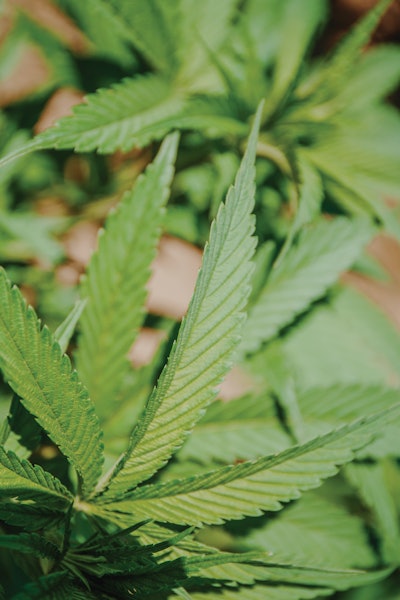
Year 2: The Year of Stagnant Water
The next year started the way 2016 had ended: with a deluge of rain. When Dan received his check from Cura, the first thing he did was buy two more greenhouses and “about 20-grand worth of air-movement and drying equipment,” he says. That way, the Jameses can harvest and dry their entire crop in one fell swoop should any more rain come at harvest.
The early-season rains put Year 2’s harvest at risk, however. Spading and rototilling the field helped somewhat, Dan says, but the ground was so waterlogged that he couldn’t plow. Still, he was able to dry the ground enough to plant roughly 3,000 clones. He was feeling good about the work until heavy rains returned a week later, dumping two more inches of water on an already-drenched field.
“It killed a huge lot of plants and stunted a bunch of them,” Dan says. He estimates nearly two-thirds of the crop was negatively affected by the rains. “On the high side, we had nice, full-sized plants. But on the low side, we had sticks and branches. We had plants weighing 0.2 pounds.”
To make matters worse, the OLCC cited Bosmere Farms for violating two regulations about new construction. The first was procedural: The Jameses had filed their paperwork giving notice to the OLCC that they had purchased two new greenhouses for drying and curing cannabis, but bureaucratic logjams delayed the approval of the changes, Glen explains.
“It wasn’t that we weren’t transparent, it was just taking so long that Dan had to move on it—harvest was coming,” Glen continues.
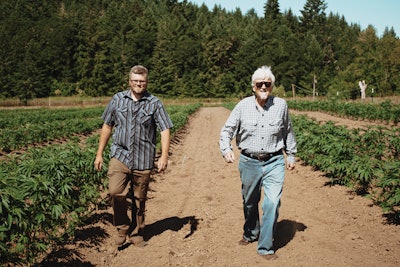
The second violation was due to those drying greenhouses not being “secured with a steel door and steel door frame and commercial lock,” according to the OLCC notice.
The impact on Bosmere Farms’ bottom line was minimal. Dan was given a choice between paying a $4,125 fine or serving a 25-day suspension of Bosmere’s retailer license, meaning the business couldn’t process any Metrc payments for the suspension’s duration. It was not “a huge deal for us,” Dan explains, “because we just have the one sale per year. Between $4,000 in fines and not selling anything for 25 days, we’re not going to sell anything for 25 days anyway.”
The new greenhouses cut the drying time to two weeks, but the early-season rain proved too much to overcome, and the second year’s crop faired only marginally better than the first. Dan had projected his cost-per-pound at $35.86 based on a yield of 2,100 pounds, but what they got was 840 pounds, bringing the cost-per-pound to $89.22.
Adding to the stresses of managing a tight budget was Oregon’s supply glut. Bosmere Farms is sustainable when wholesale prices reach $100 per pound, but not when the company doesn’t meet yields and exceeds costs. Bosmere Farms made the tough decision of harboring its crop in the hopes that the market would rebound (a decision Cura accepted thanks to the companies’ close relationship). Dan waited as long as he could, stretching what little funds were left from 2017, and ultimately sold his 2017 crop in April 2018.
“We were hitting that level where the crop was about six months old, and Cura starts to discount prices after six months past harvest because terpene levels start going down, THC starts to go down,” Dan explains.
Now with two harvests under its belt, the Bosmere team is looking at 2018 as its breakout year.
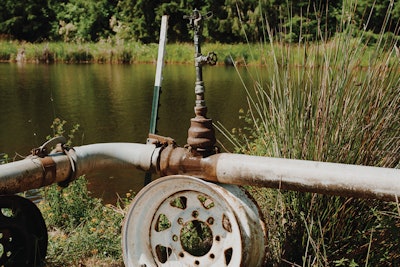
Year 3: High Hopes
Looking back at Year 2, Dan has plenty of regrets. First, he should have reduced his strain selection after the first harvest. He didn’t, chalking up the mold issues to the late-season rain. But mold remained a problem in 2017, so he reviewed his top performers and settled on the best seven: GG4, William’s Wonder, Jack Herer, Critical Plus, Barney’s Farm LSD, Granddaddy Purple and Blue Magoo. Those varieties “finish within five days of each other,” Dan says. “They have few mold issues, they really seem to enjoy the outdoor and the soil and the full sun.”
Dan also ratcheted up water-drainage efforts to avoid more mold issues. First, he shifted his crop placement. In the first two years, Bosmere block-planted its crops, which had the added benefit of choking any weeds within the canopy. The drawback, however, is reduced airflow that Dan suspects contributed to the farm’s crop loss and reduced yields in plants near the center of the block.
This year, Dan opted for a staggered, double-row layout. Each row is 3.5 feet apart, and plants are staggered 3 feet away from one another. “They seem to do better in a row as opposed to blocked,” Dan says, though he remains apprehensive about jinxing this year’s harvest. “They have more root space, they have more airflow, and they can get more light” when planted in rows, he says.
The other next-to-no-cost solution was purchasing a hiller—a component that attaches to the back of a tractor. The hiller trenches a 2-foot row and builds it into a 10-inch mound. Dan made the purchase in case Oregon got drenched again, as “at least the root systems would be 10 inches above the ground, and they would still get warmer and drier being mounted up like that,” he says. The hiller (also called a garden-bedder) only cost the farm $800, and Dan says it has made planting this year’s crop much more comfortable, and quicker, too.
(Dan practiced using the hiller on his 12,000-square-foot veggie garden on the same property, and Bosmere Farms plans to donate all excess produce [i.e., what the Jameses don’t eat] to the local food bank.)

The last effort toward improving field drainage was creating a trench on the left side of the field. Thanks to Dan’s back-aching work, water now drains away from the cannabis crops instead of remaining as standing water in the field.
Despite the humidity and mold issues that it experienced the past two years, Bosmere Farms has yet to fail a residual contaminant test. The secret is proper inspection during harvest and trimming (when unsatisfactory cuttings get tossed) as well as a focus on biological pesticides.
In the first year of operation, Dan introduced 72,000 ladybugs into the outdoor crop. They were so vivacious that he didn’t need to add any more in the second or third year. When it comes to spraying products on the crop, Dan only uses two bacteria strains found in products called Actinovate and Serenade.
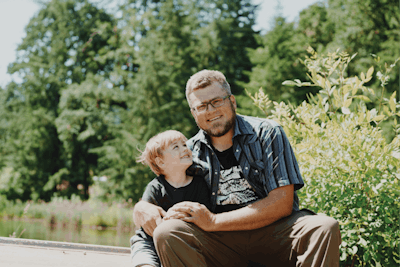
“It’s two strains of bacteria that I spray as [the plants] transition to flower, and then I’ll spray it again about halfway through flower,” Dan says. “Serenade is best for botrytis, and Actinovate is able to [suppress and control] powdery mildew. … I put those two together in my gas-powered backpack and just start fogging.”
This year, the team behind Bosmere Farms hopes they can keep the best of 2016 and 2017, and avoid all the pitfalls from those years. While their budget projects a yield of around 2,100 pounds, the Jameses have a chance to make a killing as they put more than 3,000 plants in the ground. Not long after filling the field with clones, the father-and-son team got busy planning its next sale.
When Dan last spoke to his contact at Cura, he asked the rep whether they could arrange a Dec. 1, 2018, pickup for this year’s harvest. When the rep replied that they could guarantee a pickup, but not a selling price, Dan couldn’t help but chuckle to himself.
“If I can hit my yields, the price doesn’t matter,” he says. “We have 3,300 plants this year. If I can hit 1 pound per plant, and I know I can do that—I know I can do it—we can get our cost under $25 a pound.”

















